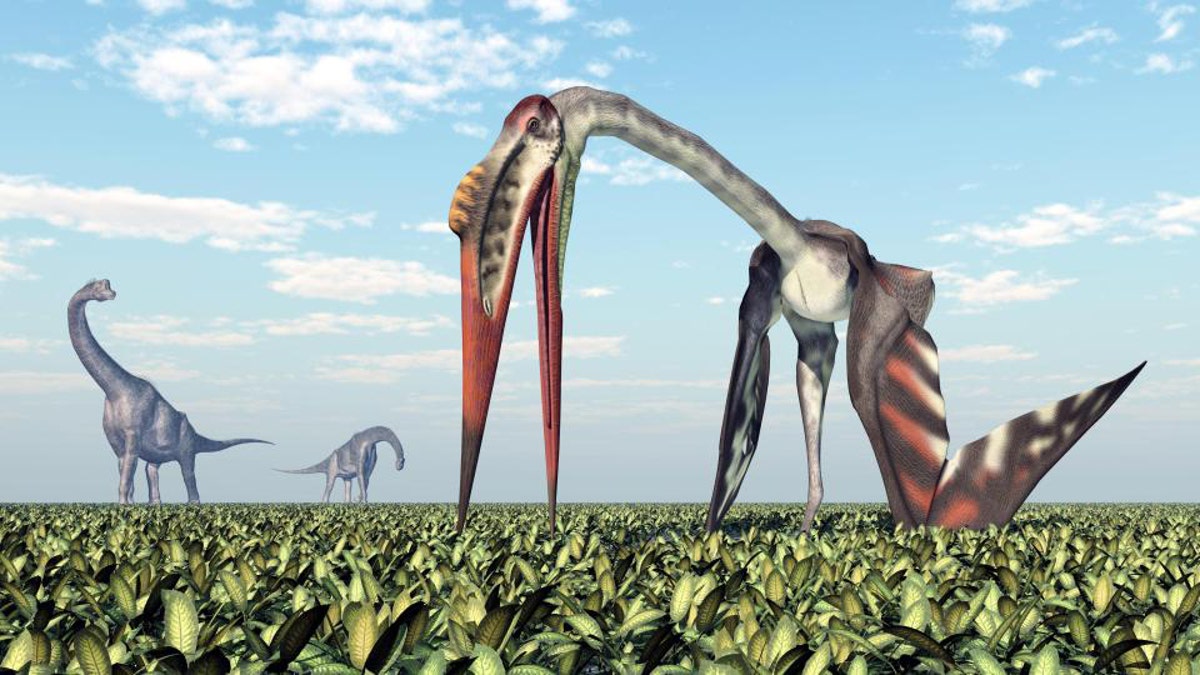
Artist's impression of Quetzalcoatlus (iStock)
A monstrous, meat-eating flying reptile that had a wingspan of a small airplane, could walk on all fours and stalked its prey on land has been found in the Gobi Desert of Mongolia.
Fortunately for us humans, who would have made for a delightful midday snack, this pterosaur is dead. Long dead. Seventy million years dead.
With an approximately 36-foot wingspan, “It might have been this quite robust, formidable predator,” Mark Witton, an expert on pterosaurs at the University of Portsmouth in the U.K., told National Geographic. “They seem to be feeding on things on the ground and are generalist in their ability to grab basically whatever they can fit in their beaks.”
THE MASSIVE ASTEROID THAT KILLED THE DINOSAURS WAS EVEN MORE DEVASTATING THAN ANYONE IMAGINED
Thankfully, that didn’t include humans, who weren’t around at the time. Scientists think this pterosaur had to settle for a diet of little dinosaurs.
Researchers from the United States, Japan and Mongolia have been collecting the prehistoric animal’s skeletal remains since 2006, when Buuvei Mainbayar, a paleontologist from Mongolia, discovered its first fossil in the western Gobi.
Mainbayar showed the fossil to Takanobu Tsuihiji of the University of Tokyo, and “I immediately recognized that it might be a pterosaur and was astonished at its gigantic size,” Tsuihiji said. “Straight away, we went back to the site and discovered the rest of the specimen.”
200-MILLION-YEAR-OLD 'MEGA-CARNIVORE' DINOSAUR DISCOVERED
What they discovered were the remains of a flying monster that would have stood 18 feet high on the ground and had a wingspan that rivaled the length of the two largest pterosaurs currently known: Quetzalcoatlus, found in Texas in the 1970s, and Hatzegopteryx, found in Romania in the 1990s.
The Mongolian pterosaur has not been declared a new species yet, because of its incomplete remains.
“Although fragmentary, the specimen is from a gigantic individual … extending the geographic range of gigantic pterosaurs to Asia,” the scientists wrote in their report, which has been published in the Journal of Vertebrate Paleontology.
